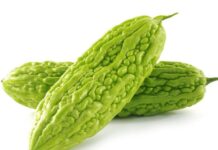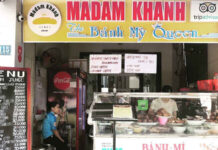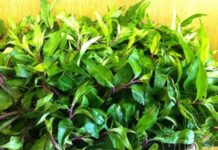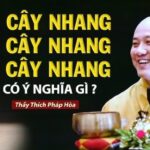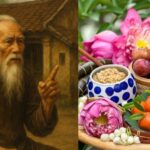The tradition of burning incense is an integral part of Vietnamese spiritual life, and it goes beyond being a mere ritual. It is a cultural practice that is deeply rooted in the country’s ethnic identity. The 15th day of the lunar month, known as the full moon day, holds special significance, and the act of burning incense on this day becomes even more sacred and widespread. It is a time when people pay homage to their ancestors, remember the deceased, and strengthen the bond between generations.
In Vietnamese belief, the full moon day is when the heavens and earth are in harmony, and the yin and yang meet. Lighting incense on this day is not just a way to honor one’s ancestors but also to offer prayers for peace, health, and fortune.
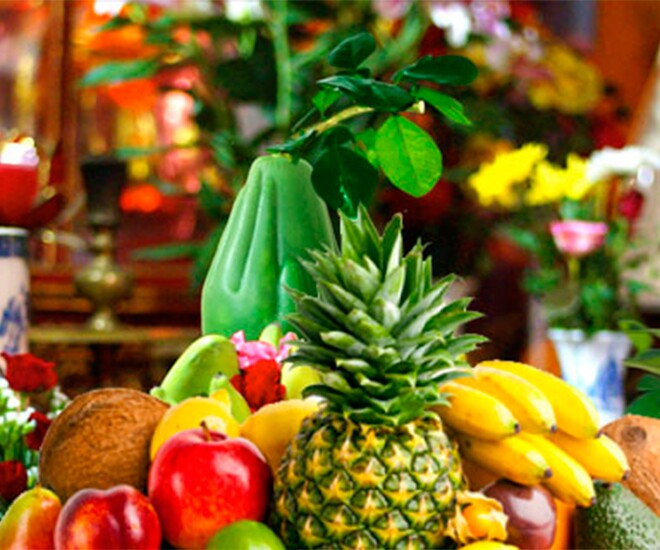
The offerings on the full moon day vary across regions and family customs but typically include incense, lamps, fresh flowers, fruits, and sometimes, a vegetarian meal. The presentation of the offerings need not be elaborate; what matters most is sincerity. Choosing an auspicious time during the full moon day to light the incense is believed to bring good luck and prosperity to the family.
This year, the full moon day of the fourth lunar month falls on a Monday, May 12, according to the solar calendar. According to Feng Shui expert Phung Phuong, there are two golden hours for burning incense:
– Hour of the Dragon (5-7 am)
– Hour of the Goat (1-3 pm)
These are considered the ideal times to light incense, offering prayers for enlightenment and the fulfillment of wishes. However, if circumstances do not permit, families can still offer incense at other times of the day. The most important thing remains the sincerity and good intentions toward the ancestors. As long as one’s heart is in the right place, lighting incense at any hour will bring harmony and smoothness to all endeavors.
Auspicious Direction and Time for Starting a Journey on the Full Moon Day
Phung Phuong suggests that the auspicious direction to bring luck, happiness, and wealth on the full moon day of the fourth lunar month is the southwest. There are three auspicious time frames for starting a journey:
Great Peace (1-3 am and 1-3 pm)
Swift Happiness (5-7 am and 5-7 pm)
Minor Good Luck (9-11 am and 9-11 pm)
How Many Incense Sticks Should Be Lit on the Full Moon Day?
On the full moon day, it is customary for people to burn incense in odd numbers. Therefore, individuals can light three, five, or nine sticks of incense, depending on the worship space.

– Lighting one incense stick is known as lighting the Peace Incense. This is usually done when worshipping household deities. Lighting one incense stick with only the core present is for maintaining the daily altar.
– According to Buddhism, lighting three incense sticks is called the Three Jewels Incense, while in folk beliefs, it is called the Three Talents of Heaven, Man, and Earth. Lighting three incense sticks can invoke responses, protect the household, and ward off calamities.
– Lighting five incense sticks is common when praying for wealth or worshipping the God of Wealth on the first and full moon days.
– Lighting seven incense sticks is for invoking celestial beings and celestial soldiers. However, it is advised not to light this number of incense sticks unless necessary.
– Lighting nine incense sticks is an offering to the Buddha and is used in larger or smaller altars accordingly. Nevertheless, it is recommended not to use nine incense sticks on household or family altars.

5 Things to Do on the Full Moon Day of the Fourth Lunar Month for Inner Peace and Prosperity
According to Eastern beliefs, the full moon day is when the heavens and earth are in harmony, and yin and yang are balanced. It is an ideal time to nurture one’s inner self and attract positive energy. To welcome this day with peace and good fortune, one can perform the following actions:
Clean Living Spaces: It is advisable to clean the altar and living spaces thoroughly to create a fresh atmosphere. When cleaning the altar, ensure not to move the incense bowl. Incense or lit firewood can be used to purify the air and ward off negative energy. Getting rid of old and unused items and accumulated trash helps facilitate the flow of positive energy.
Eat Vegetarian Meals and Do Good Deeds: The full moon day is an opportunity to purify the body and mind, so it is recommended to refrain from killing and eating meat. Instead, opt for vegetarian meals or light meals. Doing good deeds, such as helping those in need, donating, and releasing captive animals, nurtures compassion and attracts good luck.
Meditate or Chant Sutras: Take time during the day to meditate, chant a short sutra, listen to meditative music, practice deep breathing, or simply sit in silence for a few minutes. These practices calm the soul and relieve anxiety.
Avoid Negativity: On this day, it is best to refrain from arguing, quarreling, or speaking negatively. It is also advisable to avoid wasteful spending and initiating significant endeavors unless necessary to maintain stability and smoothness in one’s luck.
Write Down Your Wishes: Take some time to write down your wishes, goals, or plans for the next half month. By concretizing your desires, you can focus better and attract supportive energy from the universe.
The information in this article is for reference only and is not intended as spiritual guidance.
The Heart of Hue: A Country Market with a Twist.
Nestled amidst the white sandy beaches of Thua Thien Hue, Vinh Thanh Market buzzes with vibrant energy amidst the tranquil countryside. Beyond being a mere trading hub for locals, this unique market convenes thrice daily, vividly portraying the distinct cultural practices of a region nestled between the sea and the lagoon.
The Heart of Nam Dinh: Unveiling a 700-Year-Old Marketplace, Overflowing with Nostalgia and Local Pride
Stepping into this ancient market in Nam Dinh, visitors are not only immersed in the traditional architectural space with its faded tile roofs and earthen bricks but also given the chance to relive their childhood through simple rustic treats such as sweet soups, ‘banh gai’ (a type of steamed glutinous rice cake), fried dough sticks, and ‘banh dung’ (a local delicacy made from glutinous rice).













